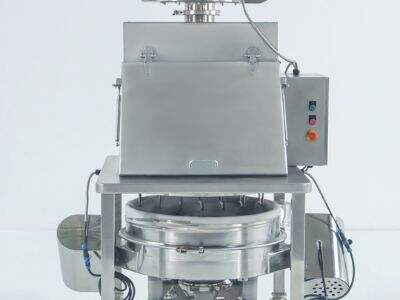코ーン 밀과 회전식 시프터는 공장에서 재료를 처리하는 데 사용되는 장비입니다. 고품질 코ーン 밀과 회전식 시프터의 차이점을 이해하면 구매 결정에 도움이 됩니다. 오늘은 코ーン 밀과 회전식 시프터 사이에서 선택하는 데 고려해야 할 사항과 각 머신의 장점에 대해 논의하겠습니다.
코ーン 밀과 회전식 시프터 구분하기:
코ーン 밀과 회전식 체는 각각 두 가지 일을 수행하도록 설계되었습니다: 물질을 더 작게 만들고, 물질을 분리하는 것입니다. 하지만 이들은 서로 다른 방식으로 이를 수행합니다. 코ーン 밀은 물질을 작은 덩어리로 갈아내기 위한 원뿔 모양의 회전 장치를 포함하고 있습니다. 진동기는 직선형 스크린(또는 둥근 스크린)을 사용하여 진동을 통해 물질을 분쇄하며, 회전식 체는 기울어진 회전 스크린(메탈 실린더 내에서 회전)을 사용한 원형 스크린을 사용하여 분류 과정을 변경합니다.
선택할 때 고려해야 할 사항:
코ーン 밀과 회전식 체 중 어느 것이 더 적합한지를 판단할 때 고려해야 할 몇 가지 사항이 있습니다. 작업할 물질 먼저 고려해야 할 중요한 요소는 실제로 작업할 물질입니다. 코ーン 밀은 크기별로 분쇄되어야 하는 단단한 물질에 일반적으로 적합합니다; 이 기계들은 압력 아래에서 응축되는 부드러운 물질에는 적합하지 않으며, 이러한 경우 물질이 퍼프 상태가 되기 쉽습니다. 회전식 체는 조립 전에 조약돌처럼 큰 덩어리를 만들고 이후에 미세한 가공을 거치는 등 각 단계에서 이점을 제공하는 더 가벼운 용도에 가장 적합하며, 거의 모든 크기의 재료를 처리할 수 있습니다.
두 번째로 고려해야 할 것은 완제품의 크기입니다. 코ーン 밀은 출력 재료의 입자 크기를 변경하기 위해 속도를 조정할 수 있기 때문에 균일한 크기의 재료를 만드는 데 매우 좋습니다. 반면, 회전식 체는 큰 덩어리나 흙을 녹이고 덩어리를 풀어내는 데 최적의 선택입니다.
코ーン 밀의 장점:
코ーン 밀의 주요 장점은 다양한 재료를 일정한 크기로 만들 수 있는 능력이다. 이는 제품의 일관성을 중요시 여기는 기업들에게 중요한 요소이다. 코ーン 밀은 많은 양의 재료를 처리할 수 있으며 필요한 에너지를 줄여 산업 규모의 작업에서 시간과 비용을 절약할 수 있다.
회전식 체의 작동 원리:
물질을 분리할 때, 회전식 체는 설계 특성상 매우 효과적인 방법이다. 그들은 회전하는 스크린을 사용해 물질의 크기에 따라 정렬할 수 있어 고품질의 제품을 얻게 된다. 또한 회전식 체는 다목적 용도로 다양한 응용 분야와 재료에 사용할 수 있다.
올바른 선택하기:
코ーン 밀과 회전식 체 중 선택할 때 사전 처리 모듈 가공할 재료, 필요한 최종 제품 크기 및 생산량을 고려해야 합니다. 이러한 기계들이 어떻게 다른지 알고 이러한 요소들을 고려하면 작업에 적합한 기계를 선택할 수 있습니다.
이 모든 것이 콘 밀과 회전식 체 모두가 각각의 가치를 가지고 있음을 의미합니다. 만약 자재를 동일하게 만들거나 분리해야 한다면, 우리는 그 목적을 위한 펑웨이(FENGWEI) 기계 라인도 가지고 있습니다. 차이점을 염두에 두고 우리가 논의한 내용을 생각하면 적절한 장비를 선택할 수 있을 것입니다.


